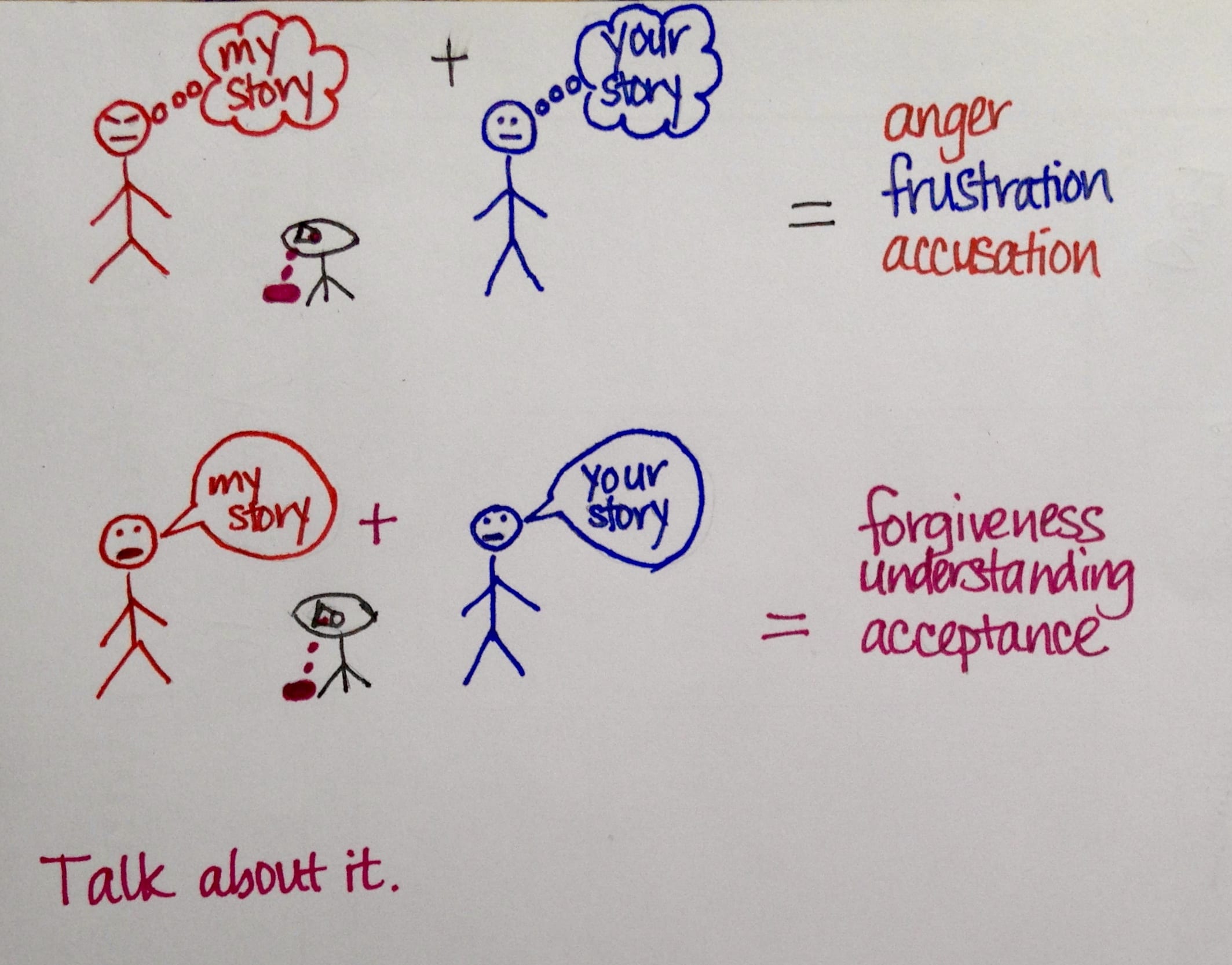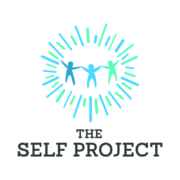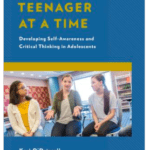Going Deeper with Non-Violent Communication

Many parents and educators will have some familiarity with the idea of Non-Violent Communication (NVC), and many will not. It is something that I have drawn on to create both parent and youth curricula through The SELF Project, and I believe it’s an important concept to explore in regards to relationship and community-building. If you’re interested, I recommend checking out The Center for Nonviolent Communication‘s website where they offer basic training, information, and opportunities to connect with others exploring this work. For now, though, I’ll simply include their definition of NVC here:
Nonviolent Communication, (NVC), is based on the principles of nonviolence– the natural state of compassion when no violence is present in the heart. NVC begins by assuming that we are all compassionate by nature and that violent strategies—whether verbal or physical—are learned behaviors taught and supported by the prevailing culture.
NVC also assumes that we all share the same, basic human needs, and that all actions are a strategy to meet one or more of these needs. People who practice NVC have found greater authenticity in their communication, Increased understanding, deepening connection and conflict resolution.
The NVC community is active in over 65 countries around the globe.
The most basic rule of NVC asks that we try to focus our interactions around conflict and disagreement on our needs, rather than the tactics we’re using to get those needs met. Meaning, that you and I might be arguing about a political idea but what lies beneath our opposite positions is that we both want to feel safe and taken care of by our society. If we can peel back the layers of conversation so that we are able to acknowledge that we actually both want the same thing, the idea is that we can begin to connect on a more human level and expand our ability to have compassion for each other. But sometimes, that concept is trickier than others and here is why I think that happens:
Even if you and I both have the same basic need (ie. feeling safe and heard), it is important to recognize that what that looks like for each of us may be very different. You might feel safest if I don’t challenge you or disagree with you, while I might only feel safe if I am allowed to challenge your ideas or disagree with you. This generally happens in situations where one person has more power or agency than the other – say, in a classroom or a home where the disagreement is between a teen and their parental figure. If there is a power imbalance, it is important to address that before we can expect an honest conversation to happen.
In relationships that have been challenging or have established a dynamic where one person routinely sublimates their own needs or desires in order to keep peace (ie. feel safe), NVC may not be an option until there is significant repair of the relationship. If I have been told more than once that my needs are frivolous or imagined, it might be unrealistic to expect me to be honest with you about what I think I need in this situation, and if I can’t be honest, NVC won’t work.
Often, attempting to focus on what the other person needs can bring up some difficult emotions and thoughts, and this can happen for a variety of reasons. If it does, it’s a great opportunity to explore the relationship dynamic and look for a power imbalance, whether or not you generally feel safe with that person, and if there is mutual positive regard (ie. you trust each other and think the best of the other person’s intentions). It can take many conversations over a long period of time to establish a relationship dynamic that allows for non-violent communication techniques. It isn’t something you can simply flip on and have it work. Often, the work starts with us and our willingness to get really clear on our own needs and what they look like. For example, we may say we need to feel respected, but we also should be able to describe what that would look and feel like to us – does that mean you don’t interrupt me when I’m speaking? That you don’t try to explain away my needs or ideas as frivolous or over-reacting? That you are able to mirror back to me what I just said so that I know you were actively listening? It turns out that often, our idea of being heard or respected or safe is very very different from what other people think it is.
I do think it is important that educators and parents practice NVC with adolescents, both as a way to strengthen relationship and also to model it for them. I also know that it takes practice and intent and a willingness to spend some time looking at how we’ve managed those relationships in the past and what our needs are before we dive headlong in to challenging conversations.








Leave a Reply
Want to join the discussion?Feel free to contribute!